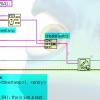Investigating LabVIEW Crashes - dmp file
-
Similar Content
-
- 4 replies
- 3,426 views
-
Potential memory corruption when (de-)serializing Sets in LabVIEW 2019 SP1 f3 (32-bit)
By LogMAN,
- flatten to string
- crash
- (and 1 more)
- 4 replies
- 4,866 views
-
- 1 reply
- 3,347 views
-
- 9 replies
- 6,005 views
-
- 3 replies
- 7,035 views
-




Recommended Posts
Join the conversation
You can post now and register later. If you have an account, sign in now to post with your account.